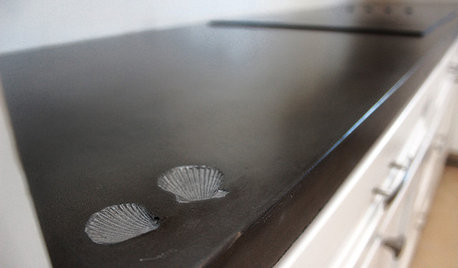WANTED: for Green Elephant
treepalm
14 years ago
Related Stories

KITCHEN COUNTERTOPSElephants of the Kitchen? What to Know About Concrete Counters
Concrete countertops are beautiful, heavy and cool — and have their own peculiarities. And a lot in common with certain gray pachyderms
Full Story
SHOP HOUZZShop Houzz: White Elephant Party Gifts
Quirky, cool and affordable gifts to share and swap
Full Story
PRODUCT PICKSGuest Picks: Elephants On Parade
Add any one of these elephants to a room for an extra dose of exotic style
Full Story
DESIGN DICTIONARYElephant Leg Column
Weigh this stout architectural element if you're going for a Craftsman-style exterior or interior
Full Story
FURNITUREHouzz Flip: 50 Comfy Chairs Every Dad Will Want to Sit In
Relax into Father’s Day with this collection of inviting recliners and lounge chairs
Full Story
BATHROOM DESIGNHouzz Call: Have a Beautiful Small Bathroom? We Want to See It!
Corner sinks, floating vanities and tiny shelves — show us how you’ve made the most of a compact bathroom
Full Story
CONTAINER GARDENSWant an Easy Tropical Oasis? Think Container Plants
Tropical plants have taken one coastal community by storm. Come on a walk with us to get ideas for your own porch, patio or garden
Full Story
GREEN BUILDING5 Things LEED Interior Designers Want You to Know
LEED means healthier homes — OK, maybe you got that. But some of these facts about the accredited designers may surprise you
Full Story
GREEN BUILDINGWhy You Might Want to Build a House of Straw
Straw bales are cheap, easy to find and DIY-friendly. Get the basics on building with this renewable, ecofriendly material
Full StorySponsored
Industry Leading Interior Designers & Decorators in Franklin County
More Discussions







lotta_plants
treepalmOriginal Author
Related Professionals
Canton Landscape Architects & Landscape Designers · Derry Landscape Architects & Landscape Designers · Clearlake Landscape Contractors · Flagstaff Landscape Contractors · Gurnee Landscape Contractors · West Haverstraw Landscape Contractors · Fort Lee General Contractors · Livermore General Contractors · Mililani Town General Contractors · Solon General Contractors · New Haven Fence Contractors · Orlando Fence Contractors · Richmond West Fence Contractors · Santa Ana Fence Contractors · Woodinville Fence Contractorslotta_plants
bejoy2